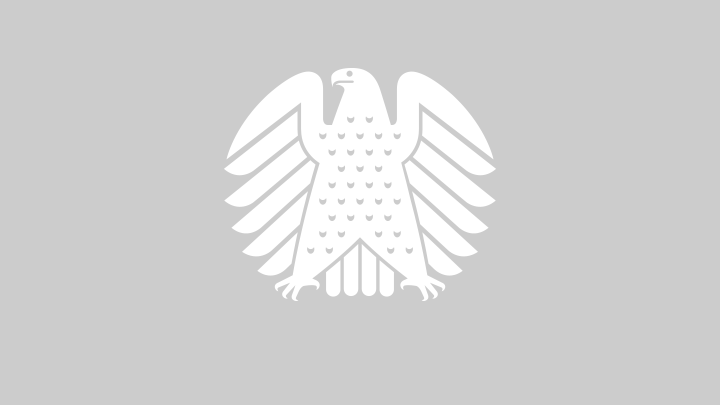Bernhard Heisig

Bernhard Heisig: "Zeit und Leben" (© German Bundestag/Volke)
Born in Wroclaw (Breslau) in 1925, died 2011 in Strodehne, Brandenburg
Heisig, a leading representative of the Leipzig School of painting in the GDR, unfolds a disquieting panorama of German history in Time and Life, a painting rooted in the Expressionist tradition that can be seen in the cafeteria on the first floor of the Reichstag Building.
The motifs, almost bewildering in their abundance, include references to Frederick the Great, the opportunism of fellow travellers who claim only to be doing their duty and Icarus, the hubristic figure from classical mythology who played such a significant part in the art of the GDR. In his painted frieze, Heisig brings to life the perpetrators of crimes, their victims and their hangers-on. In doing so, he addresses the fundamental problem of individuals living in environments dominated by state violence and indoctrination: how far is it possible for them to lead an ethically justifiable existence in accordance with their personal desires?
The scenes follow one another like a series of film stills, though frequently overlapping. The sequence begins at the left with the colours of the 1848 revolution – black, red and gold – and continues with the eagle of the Prussian coat of arms appearing behind a dying soldier and the pendulum of a large, old-fashioned clock swinging above a stone bust of Bismarck.
Further to the right, a human skeleton tries to carry off Frederick the Great while the old king holds the skull of Katte, the friend of his youth who was beheaded by order of Frederick’s father. The door of a prison cell next to Frederick recalls this traumatic experience: his father forced him to watch the execution from his cell.
The figure of an East European Jew, seen from behind in his caftan, is trapped in the door. His right arm is stretched towards an image of Hitler and a skull beneath a battery of public loudspeakers of the type used by the National Socialists for propaganda purposes. Below this, Heisig makes a visual reference to Felix Nussbaum’s Self-Portrait with Jewish Passport of 1943, the last self-portrait that Nussbaum painted before his death in a concentration camp.
The figure in the centre of the picture, a war invalid exposed as an opportunistic fellow traveller, raises his forefinger in a gesture of self-righteous admonishment, while a brilliant red clock next to him gives the time as five minutes to twelve.
To the right of the clock appear the pelican, framed in green, from the coat of arms of the Cathedral Chapter of St Peter’s in Bautzen (the site of a battle at which Napoleon defeated Prussia); a pair of lovers; the statue at Stendal of Charlemagne’s knight Roland holding the coat of arms of Brandenburg; and, at the lower edge of the painting, a self-portrait of the artist.
Otto Lilienthal’s flying machine – depicted in the top right-hand corner of the picture – crashed only a few kilometres from the spot where Heisig lives in Brandenburg. Lilienthal’s fate recalls the myth of Icarus, which for many artists in the GDR symbolised the failure of the Communist utopia and their own longing for freedom.
Beneath Lilienthal’s aeroplane, Heisig closes his disturbing sequence of historical subjects with an image of hope. The boy clutching a pink kite in a green field recalls the line ‘let your kite fly’ from a song by the GDR rock band Puhdys and expresses a desire to see the aberrations of German history now overcome.